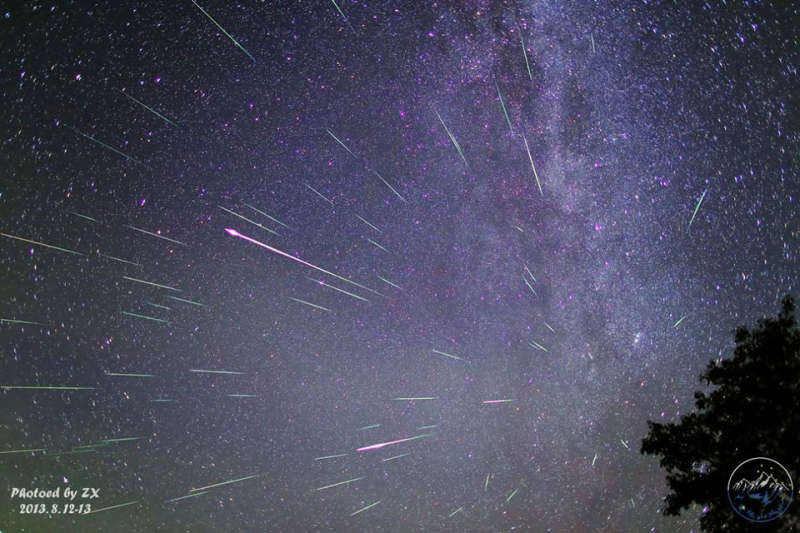Credit & Copyright: Xiang Zhan
(Beijing Planetarium)
Explanation:
Comet dust rained down on planet Earth earlier this month, streaking
through dark skies in the annual Perseid meteor shower.
While enjoying the anticipated
space weather above
Zhangbei Prairie,
Hebei Province,
China, astronomer Xiang Zhan recorded a series of 10 second long exposures
spanning four hours on the night of August 12/13 using a wide angle lens.
Combining frames which captured 68 meteor flashes, he produced
the above composite view of the
Perseids
of
summer.
Although the sand-sized comet particles are traveling parallel
to each other, the resulting shower meteors clearly seem to
radiate from a single point on the
sky in the
eponymous constellation
Perseus.
The radiant effect is due to
perspective, as the parallel
tracks appear to converge at a distance.
The next notable meteor shower may be the
Orionids in late October.
Gallery:
Highlights of the 2013 Perseids Meteor Shower
1999 2000 2001 2002 2003 2004 2005 2006 2007 2008 2009 2010 2011 2012 2013 2014 2015 2016 2017 2018 2019 2020 2021 2022 2023 2024 2025 |
Yanvar' Fevral' Mart Aprel' Mai Iyun' Iyul' Avgust Sentyabr' Oktyabr' Noyabr' Dekabr' |
NASA Web Site Statements, Warnings, and Disclaimers
NASA Official: Jay Norris. Specific rights apply.
A service of: LHEA at NASA / GSFC
& Michigan Tech. U.
|
Publikacii s klyuchevymi slovami:
Perseids - Perseidy
Publikacii so slovami: Perseids - Perseidy | |
Sm. takzhe:
Vse publikacii na tu zhe temu >> | |
